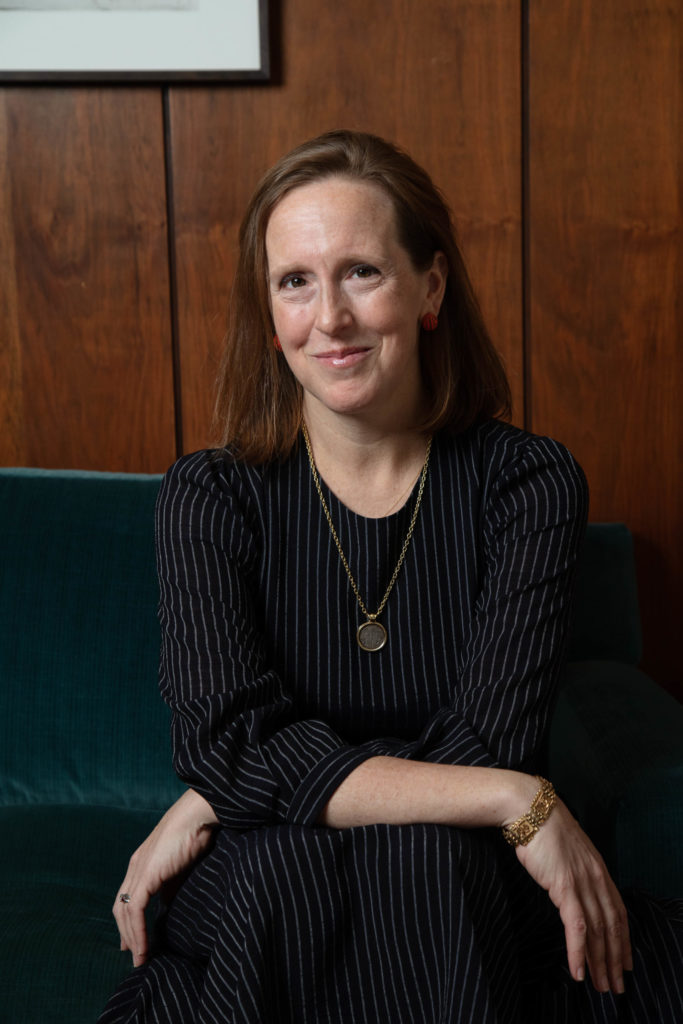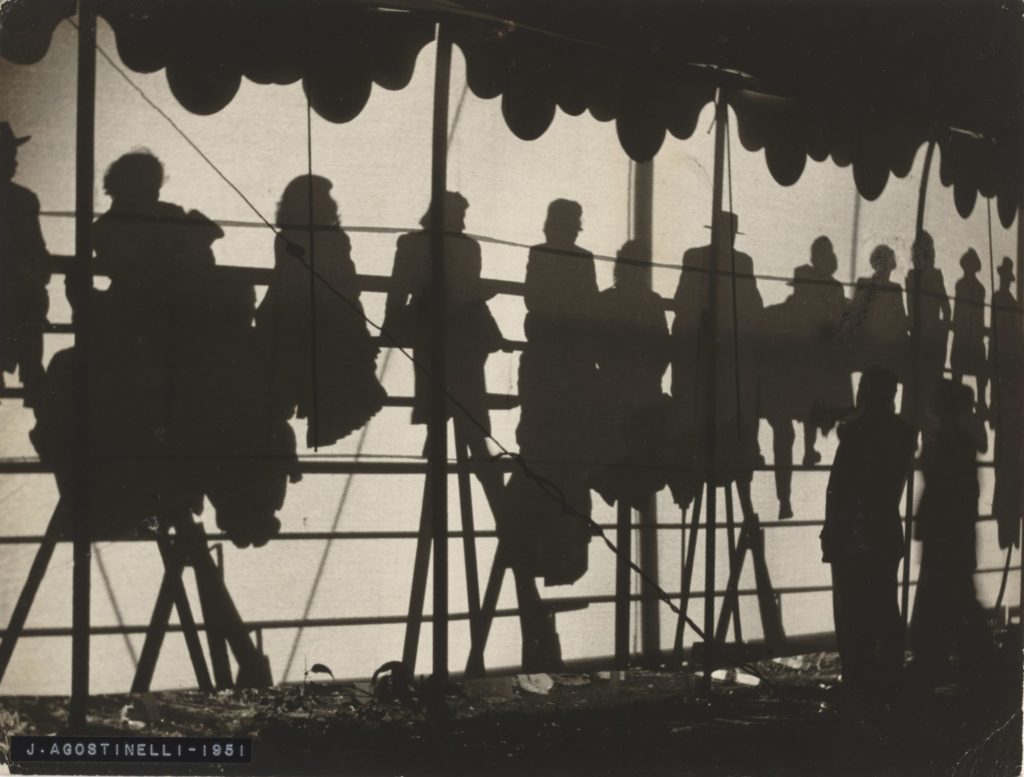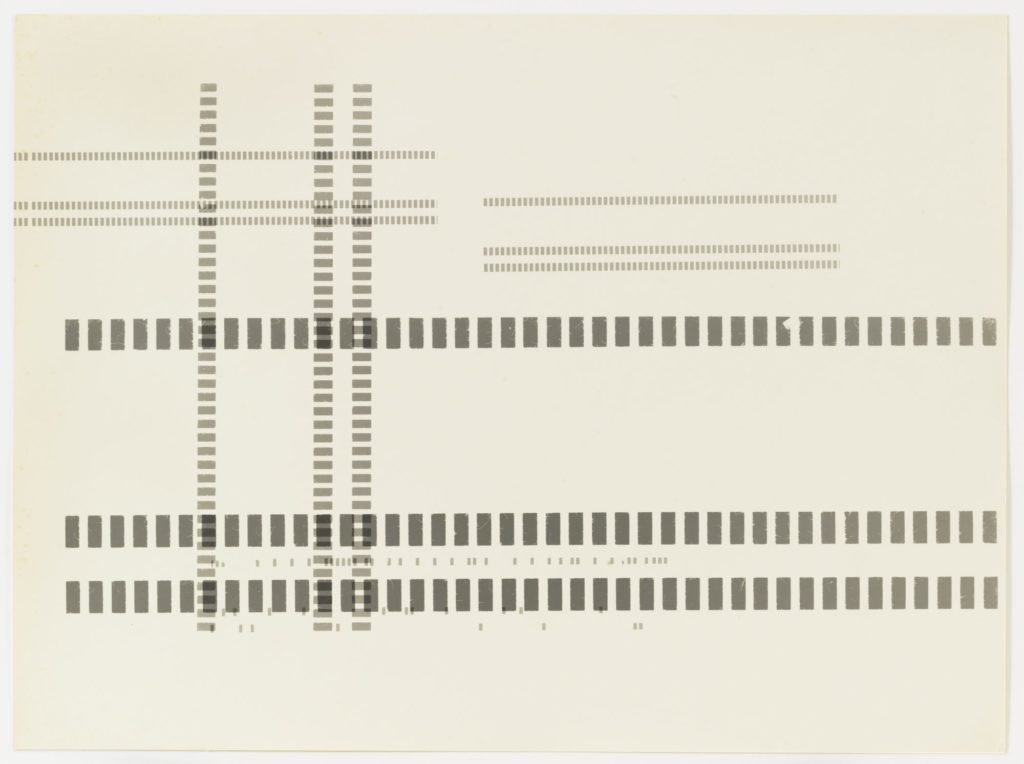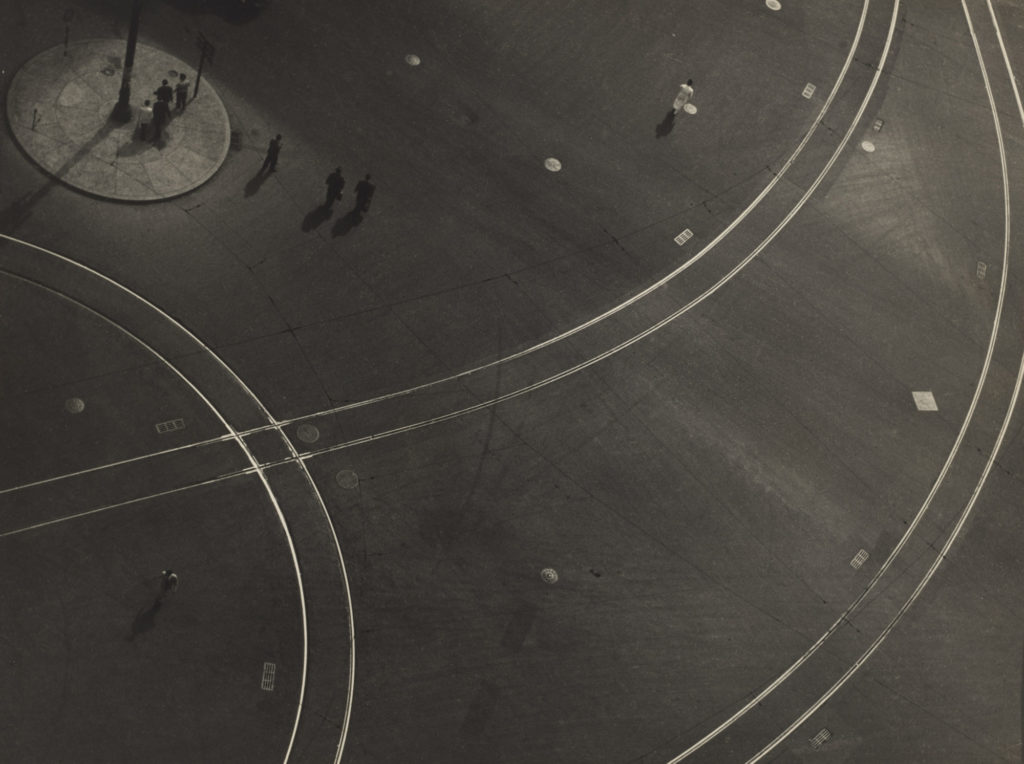Aperture’s Incoming Executive Director Sarah Meister On Reimagining Photography’s History and Future
Posted on May 3, 2021
The outgoing MoMA photography curator talks picking up the invitation to interrogate the historical record, and the importance of asking why, in advance of her May 6 Lens Mix talk.
Right as she takes the helm of Aperture Foundation, longtime MoMA Photography Curator Sarah Meister joins artist Zora J Murff and FotoFocus Artistic Director and Curator Kevin Moore for a (virtual) Lens Mix conversation on May 6.
Here, we discuss what equity looks like in the photography world, why the world needs photography, the questions we’re not asking — and how it all connects to her latest (and final) MoMA exhibition, Fotoclubismo: Brazilian Modernist Photography, 1946-1964.
Read up, then join for Lens Mix 6, May 6 from 6–7 pm. (Free and open to all, but registration is required.)
FotoFocus: You’re leaving MoMA after a 25-year career there — first as a research and curatorial assistant, now Department of Photography Curator. I’m curious, as you look back at your tenure, what kept the roles compelling to remain there? And how did your approach change over time?
Sarah Meister: MoMA is an extraordinary place. It’s been a true privilege to have grown up there. It is the kind of place where learning is an expectation every day, where there is a culture of self-criticality that means we often reflect on: What did we do? How could it be better? How could it be different? To work for an organization that fosters that means that it is never dull. [laughs] It can be difficult, but it is never dull. It means that you can work there for decades and feel that you’re constantly learning and being challenged. That commitment to the ongoing development of the staff is such a constant part of the fabric of the culture, and that is a privilege that I cherish.
But your second part of the question is really interesting. Because I have changed, and I do read things that I wrote at early stages in my career and I kind of wrinkle my nose and give myself my own skeptical eye. One of those that is happening now is this Brazilian Modernist project that looks at a group of amateur photographers who were active primarily in the 1950s, based out of Sao Paulo, Brazil. And asking: Why is it that there are these unbelievably amazing photographs, and these incredible achievements, and when I had been working in the field at the Museum of Modern Art in New York for decades, never heard a single one of their names?
To answer that question meant to think about amateur photography in general, and how, in a well-intentioned impulse to try to make sense of this messy, unruly, sprawling medium that is photography, that the effort to make sense of it can contribute to establishing hierarchies — such as those of artists over amateurs — that themselves can be exclusive. So I have been thinking: Why is it that these people have been overlooked, and have my own efforts to try to make sense of photography contributed to the building of a narrative that is meant to clarify but that also has the unfortunate consequence of excluding? And so this is the joy of the work, that you can continually try to learn by looking. And research. We do a lot of research, too.
FF: I love your emphasis there of it being about the question why? — of that digging or excavation of the things we don’t always look at or ask.
SM: It’s the digging that provides the context that allows you to go beyond the other great risk in photography, which is that anyone can make a great picture. The technical competence in photography is learnable. And making peace with that, and understanding that with a single picture, you can’t necessarily tell who’s a great photographer and who’s not. That this is something that emerges over time.
And I have also had to make peace with the fact that in this Brazilian modernist show there are a handful of artists that I will make a claim for them and their singular achievements, their restless creativity, or willingness to solve questions through their art. But there are a lot of others who made at least one or two incredible photographs, but where I simply can’t make that same defense. And whether that’s because of the lapses in the historical record, or that they were really just excellent imitators, I can’t actually answer that. And that I find really interesting.
FF: I think about that a lot with the literary canon. Once something gets established as “good,” it’s seen as given from the gods that this is good. But it’s like, no, that was a human’s decision. That was a perspective at the time that placed it there. And it just sort of snowballs into a thing without that critical question of, was that just one good shot? Or, was that just one good novel?
SM: Oh yes. And one of my essays in the book, it’s called, in Portuguese at least, “Excellent, Good, Fair, Poor: Judging Post-War Photography in Brazil.” And, like at MoMA, they had a culture of criticality. Where that sailed and where that succeeded is super interesting. But that instinct to try to judge and rank and measure, and to acknowledge the limits of that, is also really interesting. And yes, I think looking at who’s judging and how they’re judging and where taste comes into it. Because taste is invisible but also inescapable.
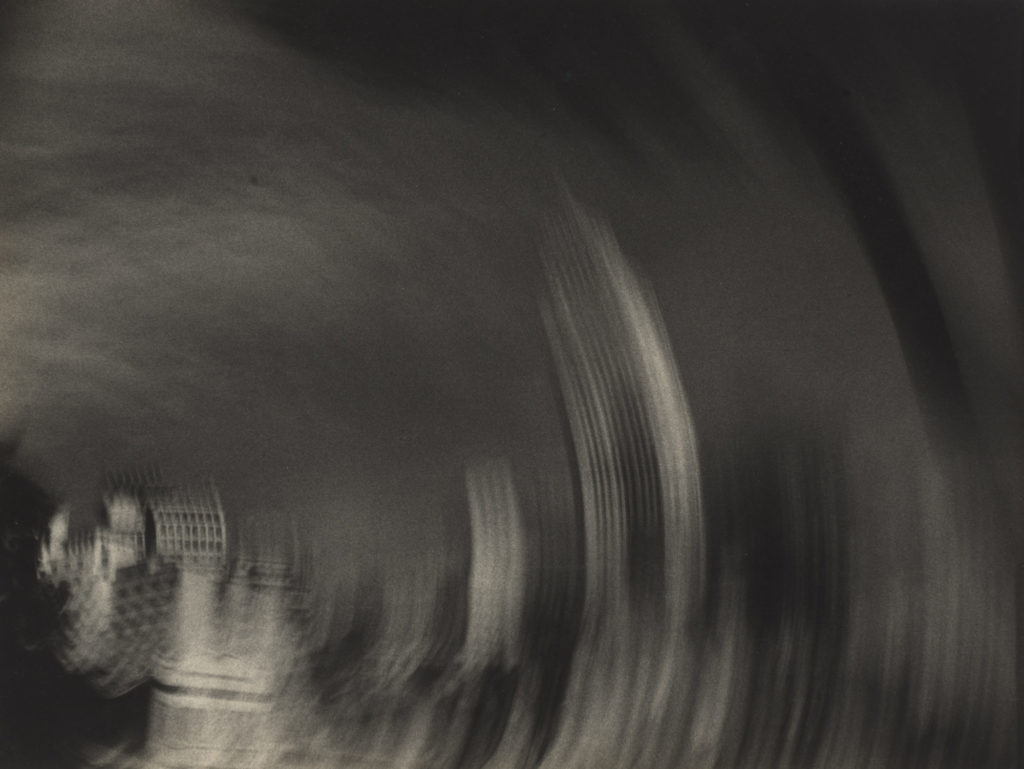
FF: In the New York Times piece about your move, Aperture’s board chair, Cathy Kaplan, noted that they chose you because they wanted someone who “would have a vision for Aperture as a cultural institution and where it fits into and works with other arts institutions in New York.” Are you able to share some initial thoughts of what that vision might be?
SM: Sure. Who needs convincing these days that photography matters? No one. And yet its meaning and its significance remain elusive. And I think there is a real role that Aperture can play in supporting artists and supporting conversations that foster difference and ever-evolving understandings of this.
Having had this wonderful privilege of working at MoMA for all of these years, where I have thought about photography’s place within the context of modern art, I’m now deeply excited about the possibility of thinking through where that fits into the picture of where photography is in the world. I feel as if Aperture is uniquely positioned to be the hub for amateurs and artists and photography for profit and non-profit and commercial and professional and journalistic.
This is actually embedded in Aperture’s history, too. One of the things I loved was reading a piece in the second issue of Aperture that one of its founders wrote, saying: “Aperture draws no editorial boundaries between the amateur and the professional, the pictorialist and the documentarian, the journalist and the scholar.” And I thought to myself, Wow, 1952, they’re putting this stake in the ground. I think the fact that it is an unanswerable, ever-evolving challenge — it’s good job security! [laughs] And the staff at Aperture has continued to advance this conversation and these questions in a way that I find really compelling.
FF: It is something, as many art forms are, that gets very siloed, in terms of venue or genre or whatever it is. But I think at a loss for the form in general. And photography is unique as an art form in that it has a pretty ubiquitous daily, functional use. How does that play into or influence what you see as its potential?
SM: The vast majority of people on this planet have a camera in their back pockets at most times. That speaks to me of a tremendous potential for opening up a conversation about: What’s the difference between what I do on Instagram and Steven Shores’s practice that takes the very delivery modes of photography and a keenly singular vision for creating images out of the world?
I realized long ago that I had limited talent as a photographer, but actually understanding what that means has been a career. I think the events of the last year have helped underscore how much we need photography. It’s not just that it’s everywhere, but that we need it. We need it to pursue more justice. And that is also really thrilling, to think that this wonderfully democratic medium can itself be a model for imagining a better world.
FF: You are entering this role at a time when cultural institutions are engaging in this deep reckoning about a lot of these questions of justice and equity. With Aperture being so public facing — publishing books and a magazine and a website, and supporting exhibitions and talks — what does some of this look like?
SM: One of the things that I admire so much about Aperture is its long-standing commitment to this, to the recognition of the role that photography can play in promoting values that are both deeply human and very fraught, frankly. You could point to the issue of Aperture Magazine from 2016 that Sarah Lewis guest edited called Vision & Justice that’s actually going to be a centerpiece of the programming at Frieze in May. When you look at Aperture’s track record of elevating practices and people that have been underrepresented and under attended to, this is a long-standing commitment at Aperture, and it’s one that I both admire and intend to protect and promote going forward.
That historic commitment in no way means “we’ve done this so we’ll pat ourselves on the back,” but it’s a matter of how can we catalyze it into an ever-deepening and expanding role in the conversation of where we go from here? That is complicated and critical. What I love is that every colleague that I’ve connected with at Aperture shares that commitment of How can what we do make a difference going forward? But that’s certainly nothing to take for granted. It’s a constant need for reflection and action. Reflection alone is not sufficient.
FF: On your website, I liked your phrasing around what “helps you reimagine photography’s history and its future.” Where do you find your re-imagination focusing these days?
SM: Looking at the parts of photography’s history that have been neglected. And to try to ask why. Whether that is why the Brazilian Modernist achievements are not in any English language history of the medium, or why more than two decades into my career I’m learning names of incredible photographers for the first time.
I was looking at Jeanne Moutoussamy-Ashe’s book Viewfinders: Black Women Photographers. She published this in 1986, and it is a book of black women photographers; Deb Willis consulted with her on it. And when I look through this book, at the dozens of examples of black women photographers’ achievements, I think to myself: These are still so under-known, and why?
So when I imagine the future, I consider this book like an invitation. It’s an invitation to do research. And when that invitation is unanswered, then we have to pick that up and say, Where do we go from here? So for me, the future is attending to contemporary artists, of course, but it’s also looking at what recuperative efforts we still haven’t made. And there are a lot of them.
Lens Mix 6: Zora J Murff and Sarah Meister, Zoom Webinar, May 6, 6:00 pm – 7:00 pm. Lens Mix talks are free and open to all, but require registration to receive the Zoom webinar link.
